On New Year’s Day we travelled through coconut groves and banana plantations to the village of Chendamangalam, as having seen the ancient Pardesi Synagogue in Fort Cochin, we had learned of the existence of another ancient synagogue in this village. Once there were several thousand Jews in Cochin, whose origins probably go back to the arrival of Yemeni Jews who were successful traders and perhaps not keen to pay the taxes imposed by the newly powerful Muslims of their homeland. There is a tradition that they came here at the time of Solomon, but whenever it was that they arrived, there are very few now in Kerala as most left in the 1950’s to go to the newly formed state of Israel.
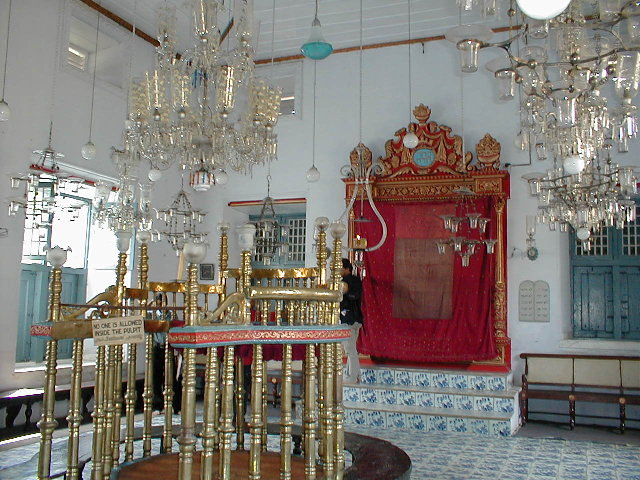
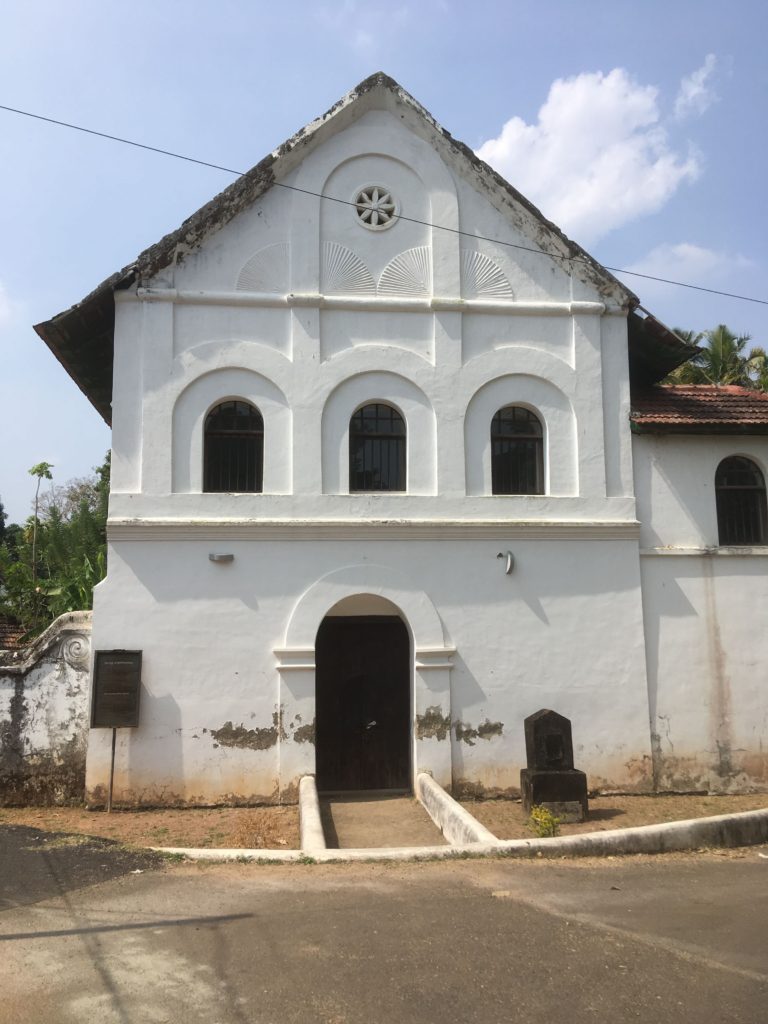
We had hoped to see the restored synagogue, which we did, but not the interior as it was closed. However, far more interestingly, for one can see pictures of the interior, it was our good fortune to meet an extraordinary man, Bezaliel Eliahu, who is one of the last of the Jews of Cochin and who returns each year from Israel to his home on the land where he was born, next to the ancient synagogue, He is also an Israeli citizen and has become a well known Israeli agricultural entrepeneur, and has received awards from both the Israeli and Indian governments for his pioneering work. It was a fascinating time talking to him and learning about this group of the so called ‘Black Jews’ who have made their home in Israel.
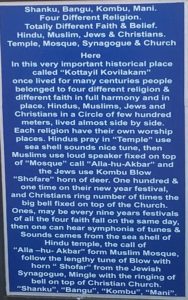
Chendamangalam has not only a synagogue, but a mosque, a Christian church and a couple of Hindu temples. There is no friction between the communities and indeed they join in each others’ celebrations, sharing the festive meals. Near to the synagogue are Muslim and Jewish burial grounds.

Just around the corner was the the Holy Cross Church where they were getting ready for Epiphany and the celebration of the visit by the Three Wise Men to the manger with shepherds, animals and an angel. Meanwhile Baby Jesus lay resting in the church while Mary was being made ready for the procession. We were also shown a statue of St Augustine, that was from the Portuguese era.
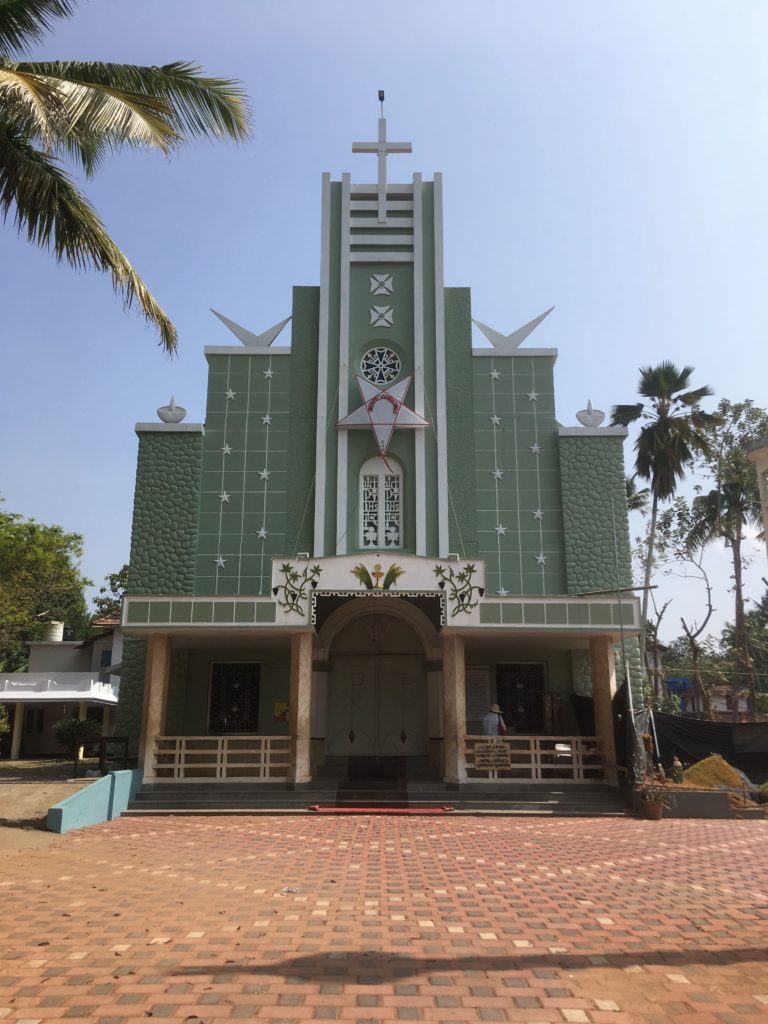
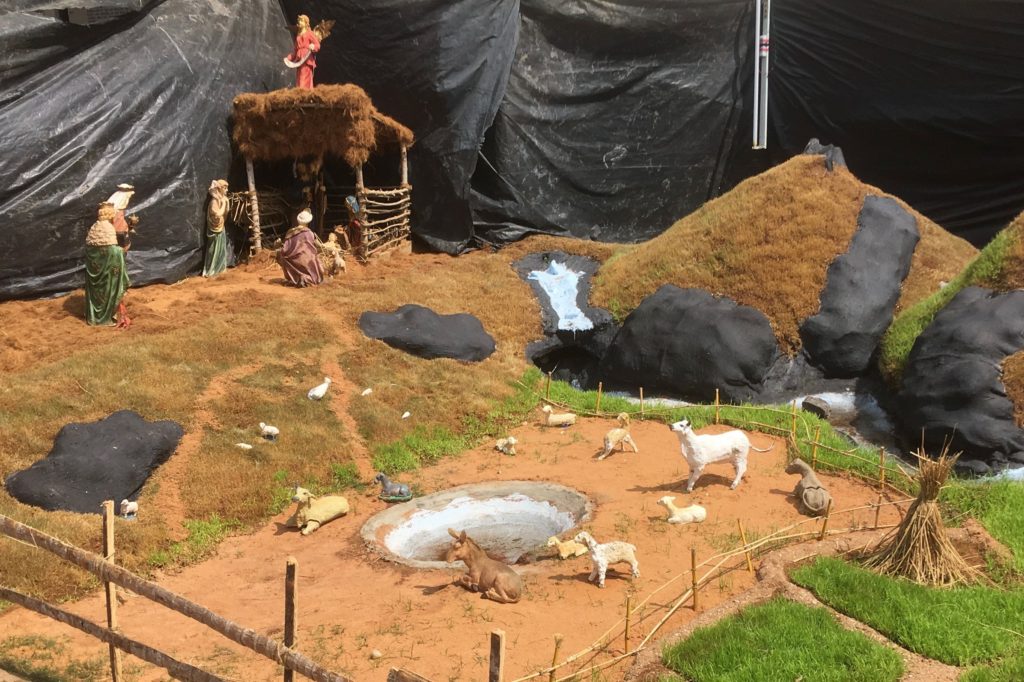
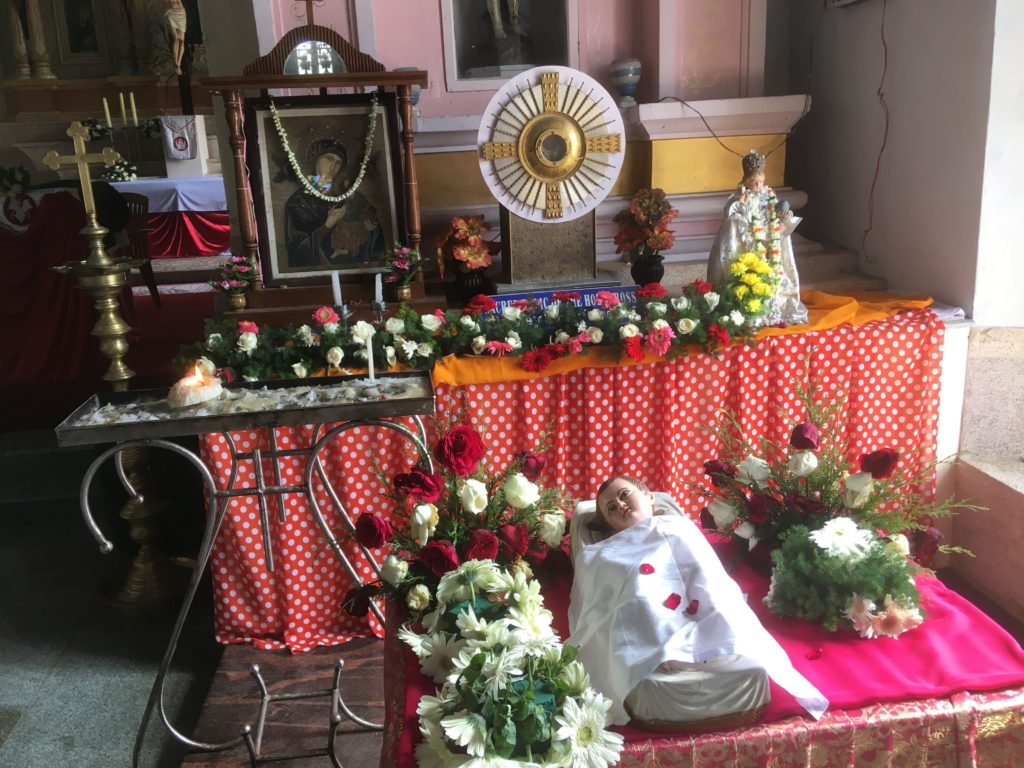

This fascinating combination of religions was made even more evident when a few minutes after leaving the church we came upon the closing stages of a celebration to Shiva. The drummers were just departing, the temple and its entrance were decked in bananas and coconuts, when to our delight a procession of elephants made their way to the gateway, first stopping to pick up coconut tree fronds. To do this, they cleverly rolled up the bunch with their trunks and then carried them on their tusks.
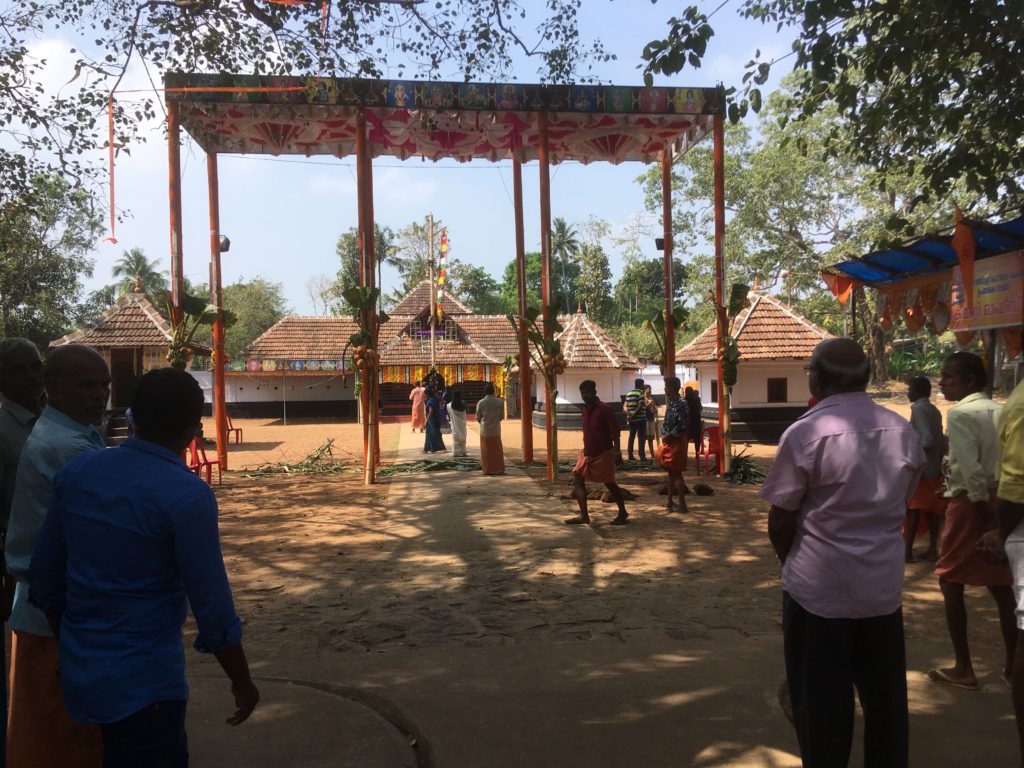
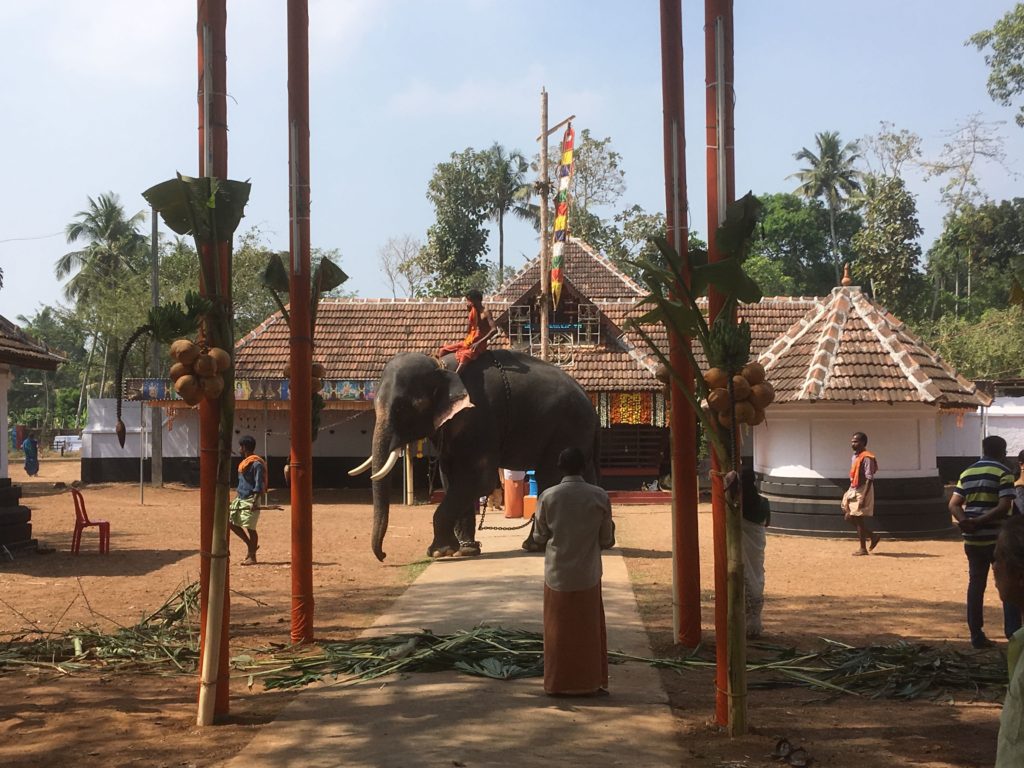
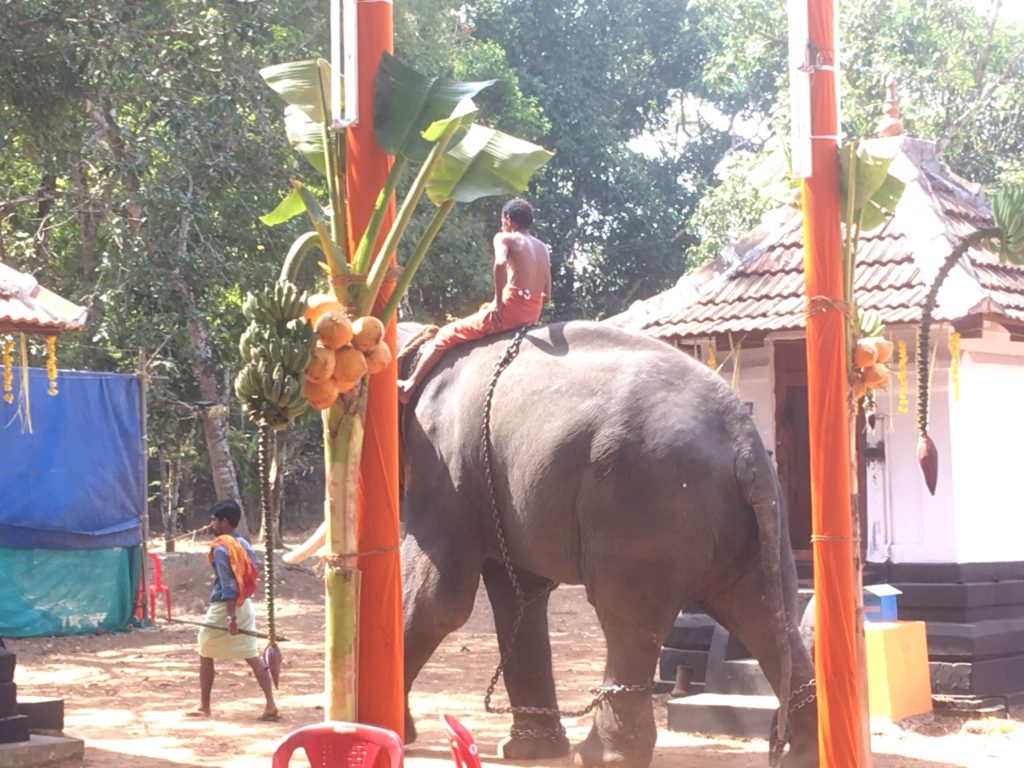

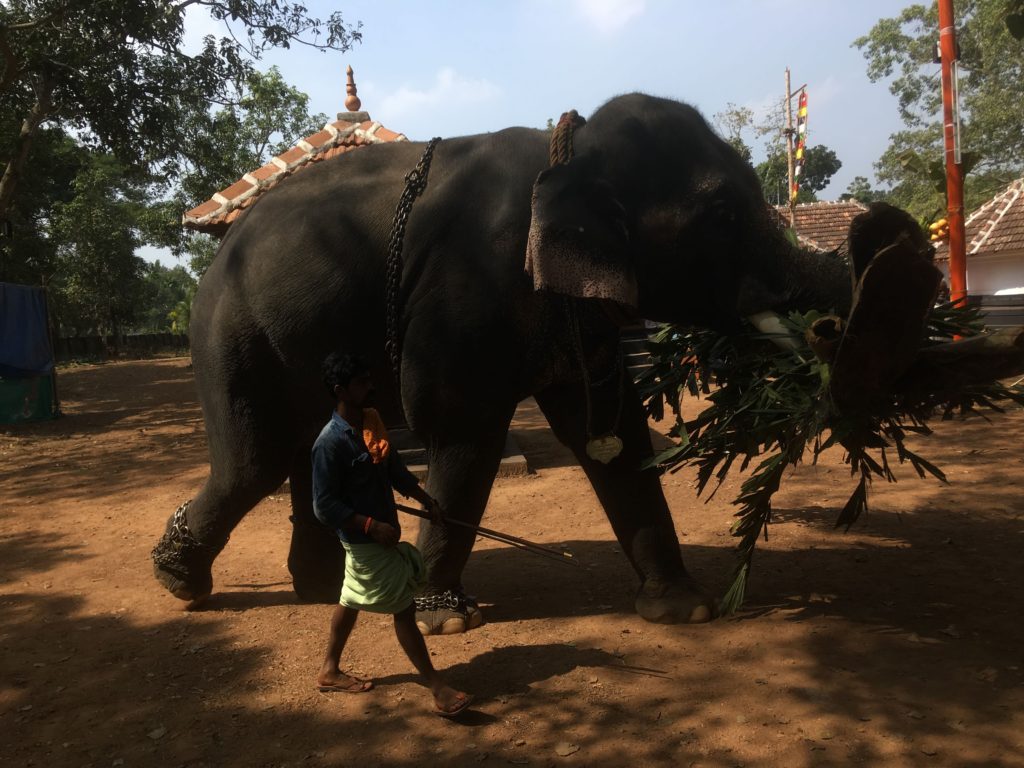
It was a day that summed up the extraordinary cultural mix that is Kerala.